 |
| June 25, 2024 | Volume 20 Issue 24 |
Designfax weekly eMagazine
Archives
Partners
Manufacturing Center
Product Spotlight
Modern Applications News
Metalworking Ideas For
Today's Job Shops
Tooling and Production
Strategies for large
metalworking plants
Bugatti Tourbillon: V16 engine with 3 e-motors makes 1,800 hp and a lotta vroom
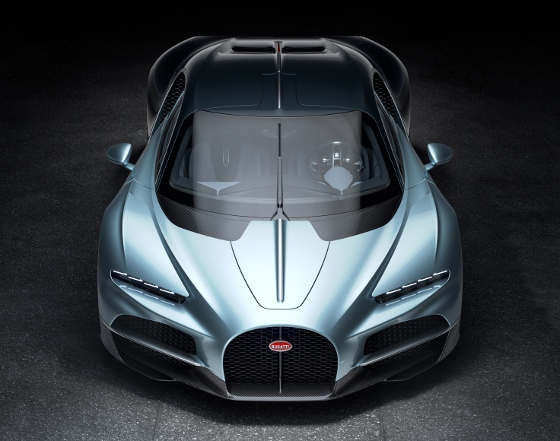
Bugatti Tourbillon. [All images courtesy: Bugatti]
In 2004, the reborn Bugatti brand transformed the world of automotive performance and luxury with a 1,001-hp hyper sports car: the Veyron. The first road car with more than 1,000 hp was succeeded in 2016 by another engineering feat: the world's first 1,500-hp car -- the Chiron. At the heart of these cars was the world's most advanced automotive engine: an 8.0-liter quad-turbo W16. Now, 20 years after Bugatti invented the hyper sports car, it redefines the concept completely with an entirely new powertrain and platform. This is the Bugatti Tourbillon. It is the first Bugatti in more than 20 years not powered by the iconic W16 engine.
The tourbillon is a watchmaking invention of a Swiss-born genius living in France in 1801. A completely original creation, it is both complex and beautiful, helping to counteract the effects of gravity on a watch to ensure more consistent time-keeping. More than 200 years later, the system of components is still revered as the pinnacle of watchmaking. It seems a good fit for the name of the latest Bugatti.
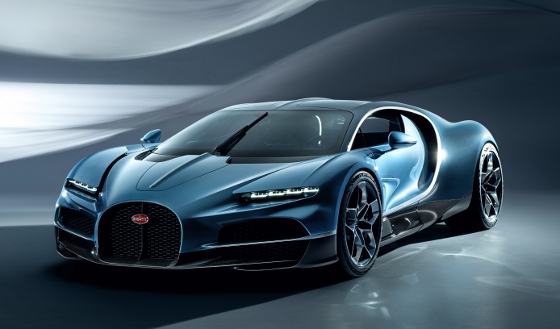
The Bugatti W16 engine was unlike any other automotive engine in the world when it was revealed. With its four turbos and prodigious power figures, it set a new benchmark for the limits of combustion engine technology, and two decades after its creation it's still unmatched or replicated. Following in its footsteps is another masterpiece of internal combustion engineering, paired with the immediate torque and flexibility of electric motors.
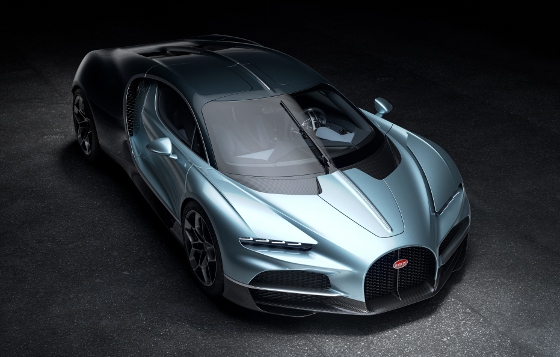
The next-generation, mid-engine Bugatti Tourbillon is powered by an all-new 8.3-liter naturally aspirated V16 engine (engineered with the help of Cosworth) paired with three e-motors: a front e-Axle with two electric motors and one electric motor mounted at the rear axle. In total, the Tourbillon produces 1,800 hp, with 1,000 hp from the combustion engine itself and 800 hp from the electric motors. It's an achievement delivered thanks to a host of cutting-edge materials and technology. Constructed from lightweight materials, the engine weighs just 252 kg (556 lb).
VIDEO: Bugatti Tourbillon: An automotive icon. [Credit: Bugatti]
The electric motors are powered by a 25-kWh oil-cooled 800-V battery housed in the central tunnel and behind the passengers. With four-wheel drive and full torque vectoring, Tourbillon offers the ultimate in traction and agility. The electric powertrain, with the electric motors spinning up to 24,000 RPM and a fully integrated dual silicon-carbide inverter, is among the most power dense systems in the automotive world. According to the car's creators, the e-axles are delivering over 6 kW per kg of e-axle mass, including inverters, motors, and gearboxes. While power, throttle response, and torque fill are priorities for the electric powertrain, the relatively large energy content of 25 kWh allows for a very usable all-electric range of more than 60 km (37 miles).
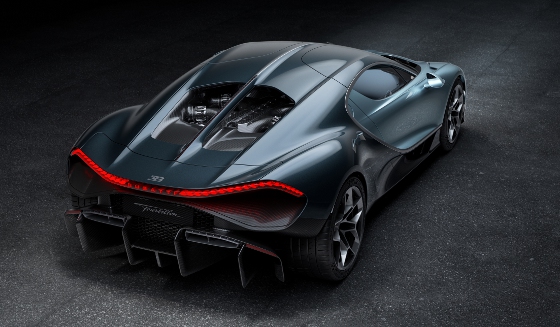
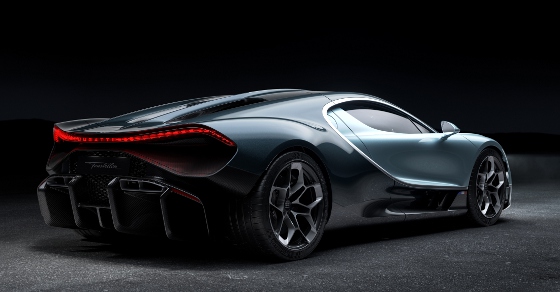
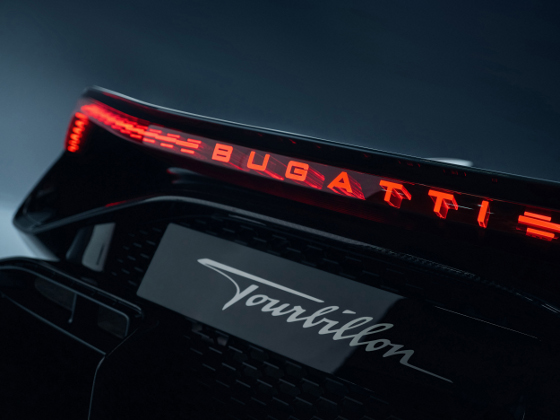
"Our philosophy has been to take any single aspect of Chiron and elevate it, looking for elegant and sophisticated engineering solutions and new technologies to deliver a timeless masterpiece," said Emilio Scervo, Bugatti CTO. "We wanted someone to be able to take any piece of this car, from inside, outside, or under the skin, and believe that it could be placed in an art gallery. The result is a car which is beautiful inside and outside, the most powerful Bugatti to date, which simultaneously elevates mechanical fascination and technical beauty to a whole new level.
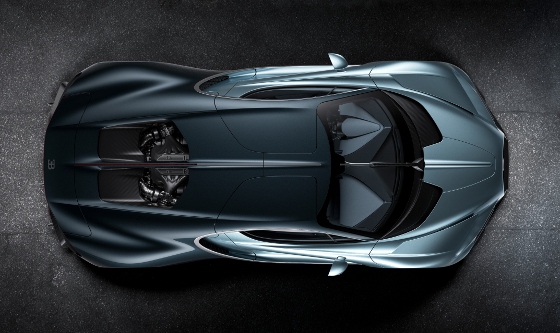
"The powertrain was perhaps the most important decision that we had to make, considering every option available to us; reengineering the W16, going fully electric, or creating something entirely new. Ultimately, we chose the hardest possible option, creating a powertrain from scratch and pairing it seamlessly with a complex system of e-motors, a new generation eight-speed dual-clutch gearbox, and more, all developed from the ground up specifically for the Tourbillon. But it was important to us that this car retained that pure and raw analogue feel of a naturally aspirated combustion engine, while pairing it with the agility and ability provided by electric motors."
"We have already heard what it sounds like when this car reaches its 9,000-rpm redline under full throttle, and it is a visceral, awe-inspiring experience that will echo for eternity," added Scervo. "With the Tourbillon, we have engineered a car that delivers the best of combustion technology and electrification; free from compromises and built with a timeless dedication to creating a memorable driving experience."
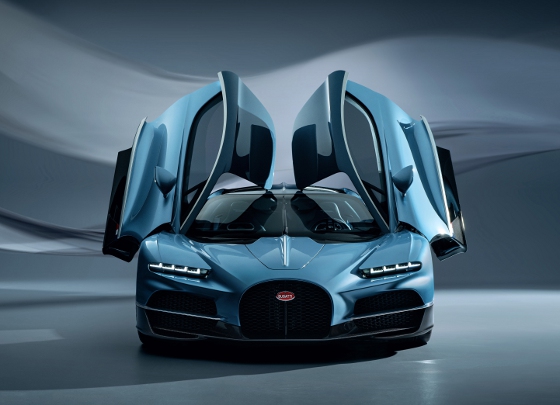
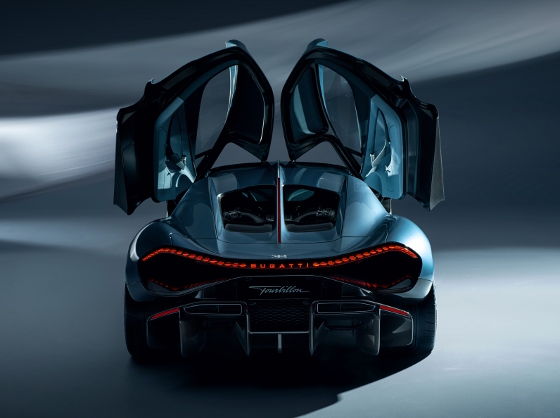
As with every Bugatti of the modern era, the Tourbillon is "shaped by speed." The ability to travel at more than 400 km/h (248 mph) requires every single surface, inlet, and ridge to be finely crafted to ensure it is not only aerodynamic but also beneficial to the car's thermodynamics. The car's designers took the four Bugatti design elements inspired by history -- the horseshoe grille, the Bugatti Line, the central ridge, and the dual color split -- and went from there.
VIDEO: Creating the Bugatti Tourbillon. [Credit: Bugatti]
Using over 20 years of expertise from the Veyron and Chiron, the Tourbillon features a number of patented technologies. One element is the rear wing, which remains deactivated during top speed runs. The wing is utilized to establish higher downforce at slower speeds and as an airbrake for improved stability under deceleration.
Much of the car's aerodynamic equilibrium is thanks to the new diffuser concept, which starts to climb from just behind the passenger cabin, rising at an ideal angle to keep the Tourbillon in perfect balance. The diffuser is built around a completely new crash concept, which is fully integrated within the structure of the diffuser itself, keeping it both effective but also hidden from sight, enabling the open rear-end design.
At the heart of the Tourbillon's design is the iconic horseshoe, from which all lines of the car originate, shaping the central fuselage volume. Docked onto that left and right are the flying fenders that allow air to stream underneath the headlights to boost air mass flow into the side intakes. This intricate interplay of airflow is enhanced by the front design, which, while maintaining the dimensions of a sculpted overhang, houses an ultra-efficient cooling system that directs air through and out of the front hood, augmenting downforce while packaging a sizable frunk in between the two radiators.
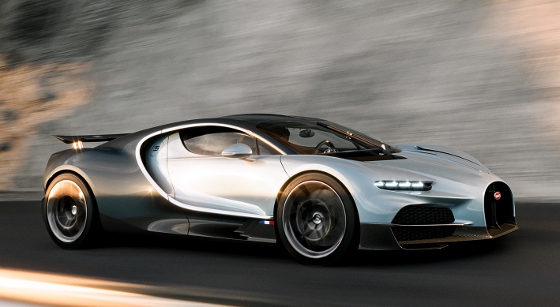
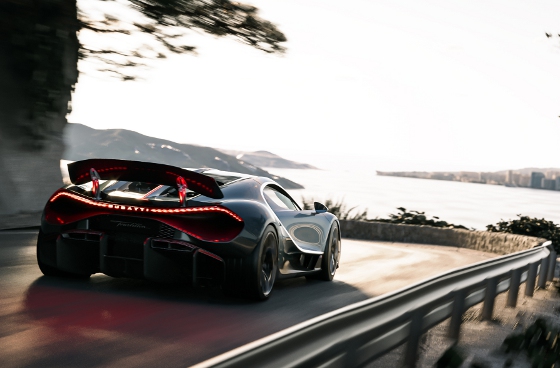
A set of advanced, electrically actuated dihedral doors not only allow for easy entry into the vehicle but also provide a dramatic sense of arrival.
The Tourbillon is designed around an entirely new chassis and body structure. The structure is made from a next-generation T800 carbon composite, which incorporates a number of weight-saving innovations, such as integrating the battery as a structural part of the monocoque and an unprecedented crash composite rear diffuser, inspired by top-level motorsport. The front composite airducts that flow through the front of the car are also integral to the structure, ensuring that each and every part of the rigid, lightweight structure is optimized. For example, the front and rear frames feature low-pressure, thin-wall aluminum casting and 3D-printed structural braces, contributing to a structure that is significantly lighter and stiffer than its predecessor.
The completely new chassis integrates multi-link suspension front and rear, forged from aluminum, moving on from the double-wishbone steel construction found in the Chiron. By opting for a new, organically designed suspension arm and upright, 3D-printed in aluminum, engineers have saved 45% in suspension weight compared with the Chiron. The rear also features an AI-developed 3D-printed hollow airfoil arm to enhance vehicle dynamics and aerodynamic performance.
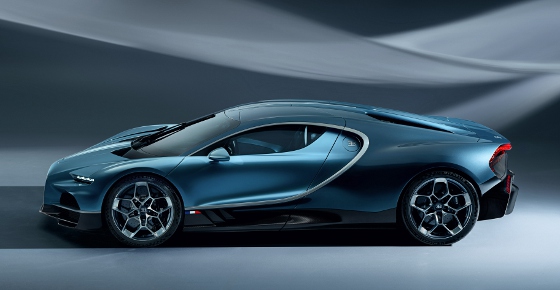
The brakes are equally advanced, featuring the ultimate carboceramic technology. A bespoke brake-by-wire system is employed, fully integrated with the movable pedal box, and blended seamlessly through an integrated vehicle non-linear controller developed by Bugatti to the hybrid powertrain. Michelin Pilot Cup Sport 2 tires (285/35 R20 at the front and 345/30 R21 at the rear) are special to the Tourbillon.
Within the new chassis, the new ultra-compact and lightweight front e-axle with dual independent motors, including the dual inverter, fits within the same package space that was available in the Chiron, adding more complexity without requiring more space. Designers and engineers also freed up more storage space and a larger luggage area as part of the clean-sheet chassis and bodyshell design, allowing owners to fit a set of bespoke Bugatti Tourbillon luggage.
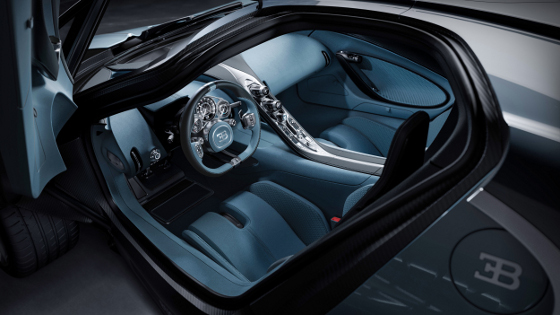
Inside, the design philosophy of the interior is focused on creating a sense of timelessness. The centerpiece is an instrument cluster designed and built with the expertise of Swiss watchmakers. It is made up of more than 600 parts and constructed from titanium as well as gemstones such as sapphire and ruby. This intricately engineered cluster remains fixed in place as the rim of the steering wheel rotates around it -- a setup known as a fixed-hub steering wheel.
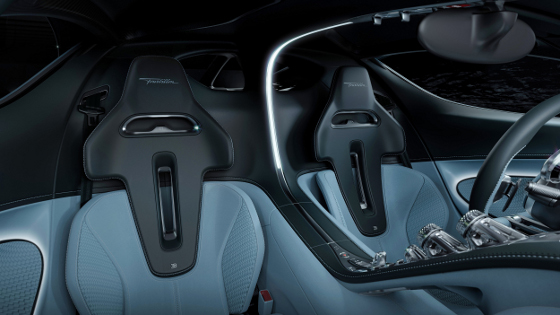
The center console is a blend of crystal glass and aluminum, revealing the intricate workings of the switches and the engine start "pull" lever that it hosts. This glass was developed over 13 separate stages to ensure it was both perfectly clear and extremely strong and safe in the event of an accident. The aluminum parts of the console are anodized and milled from a single block of metal, while the knurled aluminum switches sit at the head of a complex mechanism that is fully visible beneath the crystal glass. Drivers pull to start and a push to shut the car off.
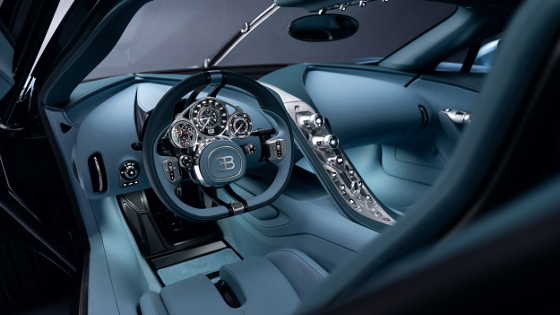
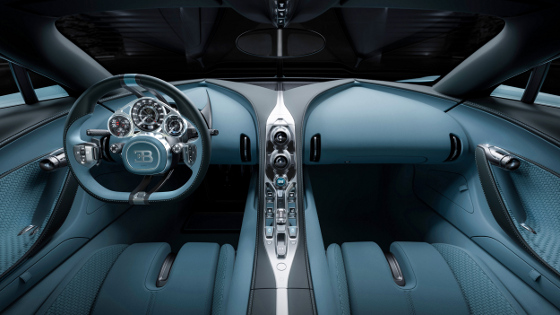
Hidden from view until desired is a small high-def digital screen that displays vehicle data and offers seamless mobile connection. An intricately engineered mechanism deploys the touchscreen from the top of the center console; portrait mode for the reversing camera in just 2 sec and full landscape mode in 5 sec.
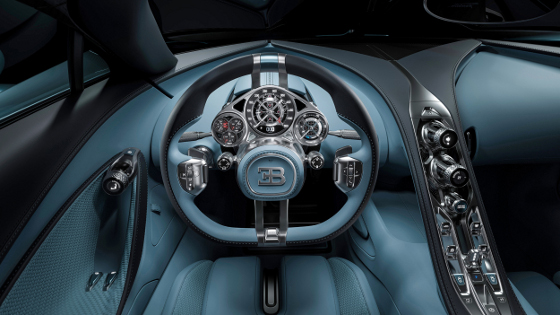
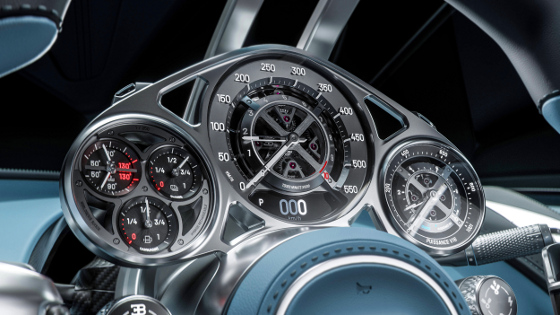
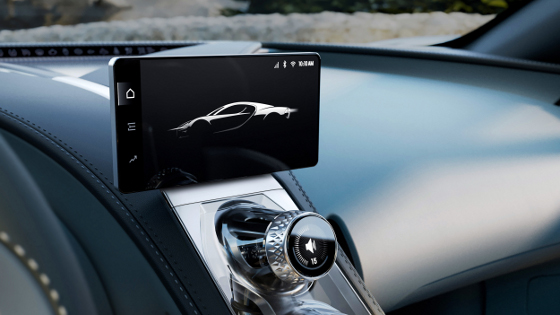
The seats have been engineered to be as light and as low as possible. The drive pedal box can be electrically adjusted forward and backward to ensure a comfortable driving position. Overall, the new interior is spacious, making it ideal for longer trips and daily use. Even the audio system has been engineered without traditional speakers and woofers, opting for an advanced system that features exciters on the door panels and throughout the car to use existing interior panels as speakers. It is a lighter and more efficient system than traditional audio setups.
The Bugatti Tourbillon is in its testing phase, with prototypes already on the road in anticipation for customer deliveries in 2026. A total of 250 examples will be built, with a starting price of 3.8m EUR net (almost $4.1 million). Hand assembly will take place at the Bugatti Atelier in Molsheim, France, following the final W16-powered Bugatti models, Bolide and W16 Mistral.
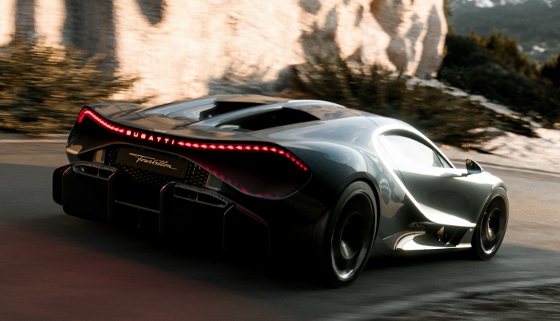
Source: Bugatti
Published June 2024
Rate this article
View our terms of use and privacy policy
